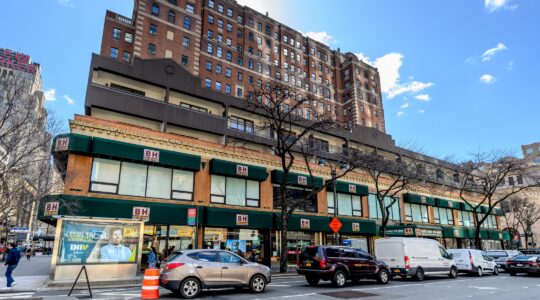As JTA’s Ami Eden explains, Natan Sharansky’s plan to convert Robinson’s Arch into an egalitarian space is not a novel idea. The arch has been discussed as a possible solution to the women’s prayer issue since the late 1990s. In 1998, a government-appointed committee suggested Robinson’s Arch as a potential site for mixed-gender services, but assumed it would be rejected by advocacy group Women of the Wall. They were right.
For the next decade, leaders of this group viewed the Robinson’s Arch compromise as inherently unequal. But others accepted the compromise. In 1999, Rabbi Uri Regev, director of the Reform movement’s Religious Action Center, stated, “It has been my view for quite some time now that Robinson’s Arch is an acceptable compromise to allow our people to hold services at the Wall and avoid confrontation.” Regev added that he considered it a “sign of goodwill” from the government.
For the next few years, the Robinson Arch compromise stagnated as the Supreme Court considered the legality of women praying in the existing women’s section of the Wall. In 2003, the Supreme Court overturned its initial decision granting women the right to full prayer at the Wall, but added that if the government did not create an egalitarian space at Robinson’s Arch within the year, they would overturn their ruling. After a little more than a year, the government inaugurated the Robinson’s Arch egalitarian space.
Yet, even with this step, Women of the Wall declined to pray there. Part of the problem lay in the fact that the site has an entrance fee and is also open to tourists who wish to see the archaeological remains. The Conservative movement, in 2006, sued the Israeli government because of the fee and in 2007, the fee was waived. Robinson’s Arch remained quiet until 2013 when Sharansky put at at the center to his solution to mounting tensions at the Wall. The site will be renovated and brought up to the level of the existing Western Wall Plaza. Women of the Wall now accept the compromise.
JTA has documented Jewish history in real-time for over a century. Keep our journalism strong by joining us in supporting independent, award-winning reporting.





